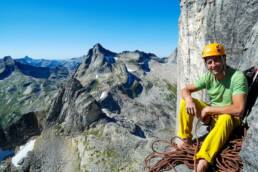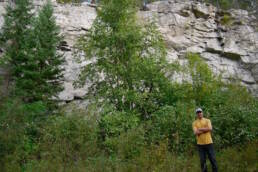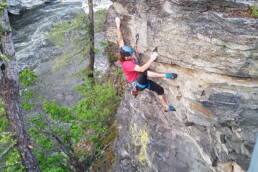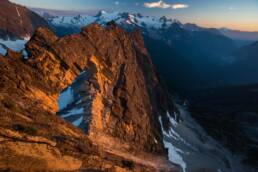There are 12 different styles of the sport of climbing. Do you know them all? Here’s a list of the various disciplines within the sport.
Mountaineering (alpine climbing)—The granddaddy of the sport is also the most dangerous. Alpinists need to be skilled at rope work, rock rescue, snow travel and much more because the terrain they’re in is so varied.
Trad climbing—Traditional climbing is what everyone did in the past 150 years before people started drilling bolts directly into rock walls. It involves a lead climber placing gear in weaknesses in the rock then attaching them to a rope for safety. The pieces are later removed by a partner, aka the “seconder.”
Sport climbing—This form of climbing has been in existence for about four decades and relies on permanent anchors placed in the rock. The most common form of anchor is a 10-millimetre-wide, stainless steel, expansion bolt that has a hanger attached wide enough for a quickdraw (a piece of equipment with a carabiner on each end) to slide through.
https://youtu.be/1GEVoQXpc4A
Aid climbing—This refers to the practice of weighting traditional climbing gear as well as fixed pieces such as bolts in order to advance higher up a wall.
Big Wall climbing—As the name suggests, this is the practice of climbing up really high walls sometimes for multiple days using portaledges affixed to the rock on which to sleep.
Top-roping—Any form of climbing in which the safety rope is affixed to a point above the climbers. Should they fall, they will typically only descend a foot or two. This style of climbing is popular at indoor gyms and amongst beginners.
Free-soloing—Not to be confused with free climbing, free-soloing is any form of climbing in which no rope or protective gear is used. American climber Alex Honnold is the most famous free-soloist in the world because he climbs very hard routes without a rope.
https://youtu.be/N1iWWvnd6L4
Bouldering—A form of ropeless climbing that takes place on large boulders, small cliffs or artificial walls. Boulderers typically place a foam pad below them for protection from a fall.
Buildering—Climbing a building with or without ropes.
Ice climbing—Climbers scale frozen waterfalls in this winter-specific form of the sport. Specialized gear is required such as crampons (spiked plates the attach to footwear), ice screws (which are inserted into the ice and attached to a rope) and ice tools, which are often erroneously called “ice axes,” but those are used for mountaineering.
Mixed climbing—This is a combination of ice and rock climbing. Enthusiasts wear crampons or a special style of footwear with embedded spikes nicknamed fruit boots and carry ice tools, which they swing into the ice or place gently in holes in the rock to help move upwards.
Drytooling—The most fringe of all the disciplines, drytooling requires the same equipment used for ice or mixed climbing, but it’s applied to rock cliffs. Typically drytooling routes are found on rock of marginal quality that rock climbers would not normally bother with. It’s a common misconception that these climbers swing the points of their tools and boots into the rock to embed them, but that’s not the case. Rather, they gently place the points into holes and cracks to lever themselves upwards.
Vince Hempsall
Vince Hempsall lives in the beautiful mountain town of Nelson, British Columbia, where he spends his time rock climbing, backcountry skiing and mountain biking (when not working). He is the editor of Kootenay Mountain Culture Magazine and online editor for the Mountain Culture Group.
Related Stories
Exclusive – Kinnaird Bluffs Rock Climbing Area Saved!
The Mountain Culture Group has just learned that the Kinnaird Bluffs rock climbing area in Castlegar, British Columbia,…
3 BC Cities Named World’s Best For Rock Climbing
In a recent article by Carlo Alcos on the Matador Network travel site, three cities in British Columbia and one in…
Castlegar Rock Climbing Area To Be Saved From Development
A Kootenay rock climbing association has announced it's raised enough funds to purchase the most popular rock climbing…
Introducing the Grand Forks Rock Climbing Guidebook (but not really)
Grand Forks, British Columbia, isn't well known for its rock climbing but local Bill Sperling is changing that with his…
Introducing the Coolest Rock Climbing Feature in Canada
This natural rock arch is easily the most amazing climbing feature in the country. Online editor Vince Hempsall shares…
New 5.10a Rock Climb In the Valhallas Is 10 Pitches Long
Last month regular contributor Steve Ogle and KMC editor Vince Hempsall climbed a new route up a beautiful swath of…








